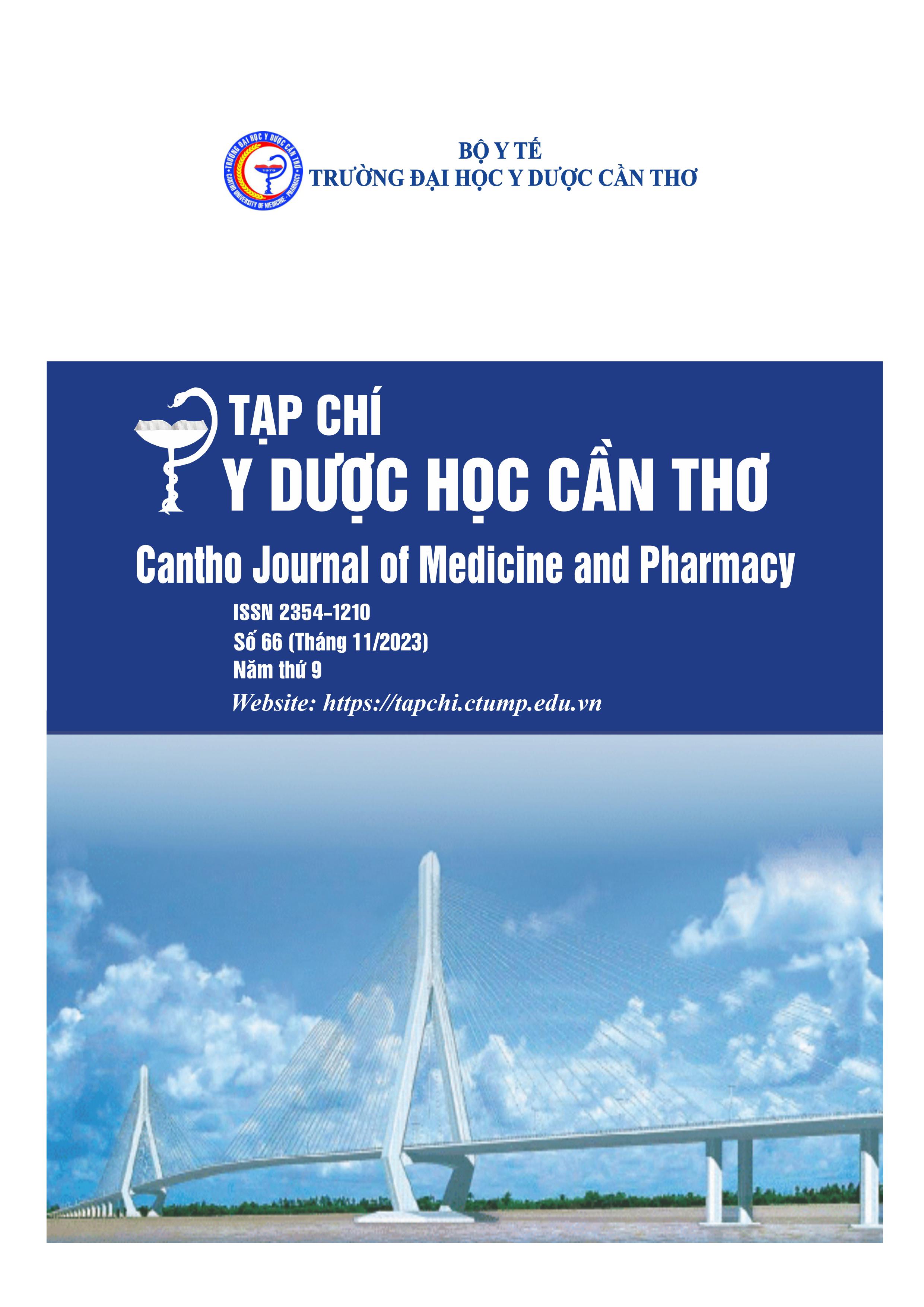TREATMENT RESULTS OF KNEE OSTEOARTHRITIS THROUGH EXERCISES WITH SHORT-WAVE THERAPY AT CAN THO ORTHOSIS AND REHABILITATION HOSPITAL IN 2022
Main Article Content
Abstract
Background: Knee osteoarthritis is typically the result of wear and progressive loss of articular cartilage. It is most common in the elderly. It can cause stiffness, joint pain, reduced movement, and daily living activity reduction and worsens the quality of life. Physical therapy, especially the combination of exercises and short wave therapy, is a conservatively effective treatment method, increasing shoulder functions. Objectives: To evaluate treatment results of knee osteoarthritis through exercises with short-wave therapy at Can Tho Orthosis And Rehabilitation Hospital in 2022. Materials and methods: Prospective study. Clinical trials have compared before and after treatment in 30 knee osteoarthritis patients. Results: After the treatment, there was a significant decrease in pain symptoms by 4.2 points, and an impressive increase of 17.50 degrees in knee joint range of motion. The quadriceps strength at levels 5 and 4 also experienced noticeable improvements, increasing to 76.6% and 23.3% respectively. Furthermore, the walking distance showed a remarkable increase of 73.4% to over 30 minutes. The treatment demonstrated exceptional results in 50% of cases and moderate results in 33.3% of cases. Overall, there was an outstanding improvement of 6.1 points in the average score at the end of treatment courses. Conclusion: In patients with knee osteoarthritis, a combination of knee exercises and short-wave therapy reduced pain, increased passive and active ranges of motion, strengthened quadriceps muscles, and improved walking distance.
Article Details
Keywords
Knee osteoarthritis, exercise, short-wave therapy
References
2. Loeser RF, Collins JA, Diekman BO. Ageing and the pathogenesis of osteoarthritis. Nature Reviews Rheumatology. 2016. 12(7), 412-420, doi: 10.1038/nrrheum.2016.65.
3. Steultjens M. P. M., Dekker J., Baar M. E., Oostendorp RA, Bijlsma JW. Range of joint motion and disability in patients with osteoarthritis of the knee or hip. British Society of Rheumatology. 2000. 39, 955-961, doi:10.1093/rheumatology/39.9.955.
4. Kolasinski, S.L., Neogi, T., Hochberg, M.C., Oatis, C., Guyatt, G., et al. American College of Rheumatology/Arthritis Foundation Guideline for the Management of Osteoarthritis of the Hand, Hip, and Knee. Arthritis & Rheumatology. 2020, 72(2), 220-233, doi:10.1002/art.41142.
5. Winter C.C., Brandes M., Müller C., Schubert T., Ringling M., et al. Walking ability during daily life in patients with osteoarthritis of the knee or the hip and lumbar spinal stenosis: a cross sectional study. BMC Musculoskeletal Disorders. 2010, 11, 233, doi:10.1186/1471-2474-11-233.
6. Bộ Y tế. Hướng dẫn chẩn đoán, điều trị chuyên ngành Phục hồi chức năng. 2014. https://storagevnportal.vnpt.vn/cbg-ubnd/sitefolders/syt/uploads/tai-lieu-chuyen-mon/2016_09/huong-danchan-doan-dieu-tri-chuyen-nganh-phcn.pdf.
7. Phạm Thị Cẩm Hưng. Đánh giá tác dụng điều trị nhiệt kết hợp vận động trong điều trị THK gối. Trường Đại học Y Hà Nội. 2004.
8. Nguyễn Xuân Nghiên. Vật lý trị liệu - Phục hồi chức năng. Nhà xuất bản Y học. Hà Nội. 2010.
9. Amin S., Baker K., Niu J., Clancy M., Goggins J., et al. Quadriceps strength and the risk of cartilage loss and symptom progression in knee osteoarthritis. Arthritis Rheumatism. 2009. 60(1), 189-198, doi: 10.1002/art.24182.
10. Nejati P., Farzinmehr A. Moradi-Lakeh M. The effect of exercise therapy on knee osteoarthritis:
a randomized clinical trial, Medical Journal of The Islamic Republic of Iran. 2015. 29, 186, PMID: 26034739; PMCID: PMC4431424.
11. Bhatia D., Bejarano T., Novo M. Current interventions in the management of knee osteoarthritis. Journal of Pharmacy and Bioallied Sciences. 2013. 5(1), 30-38, doi: 10.4103/09757406.106561.
12. Brakke R., Singh J., Sullivan W. Physical therapy in persons with osteoarthritis. Physical Medicine & Rehabilitation. 2012. 4(5), 53-58, doi: 10.1016/j.pmrj.2012.02.017.


